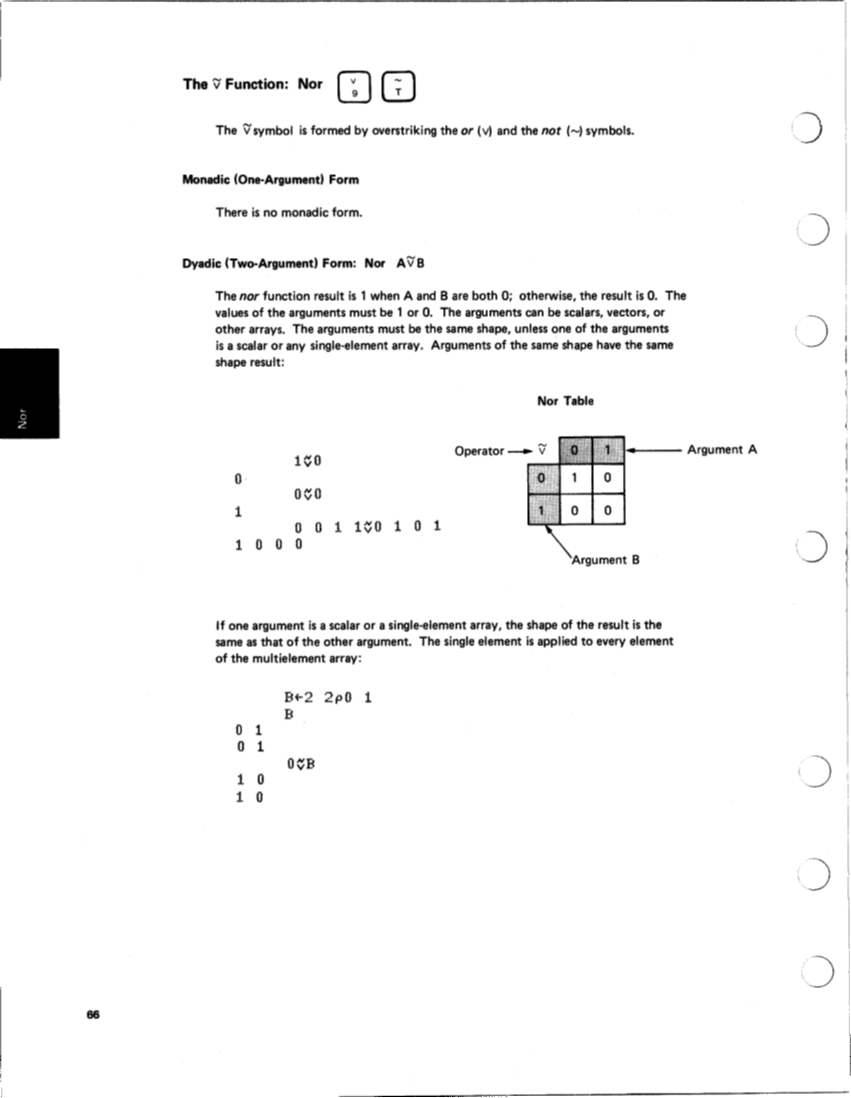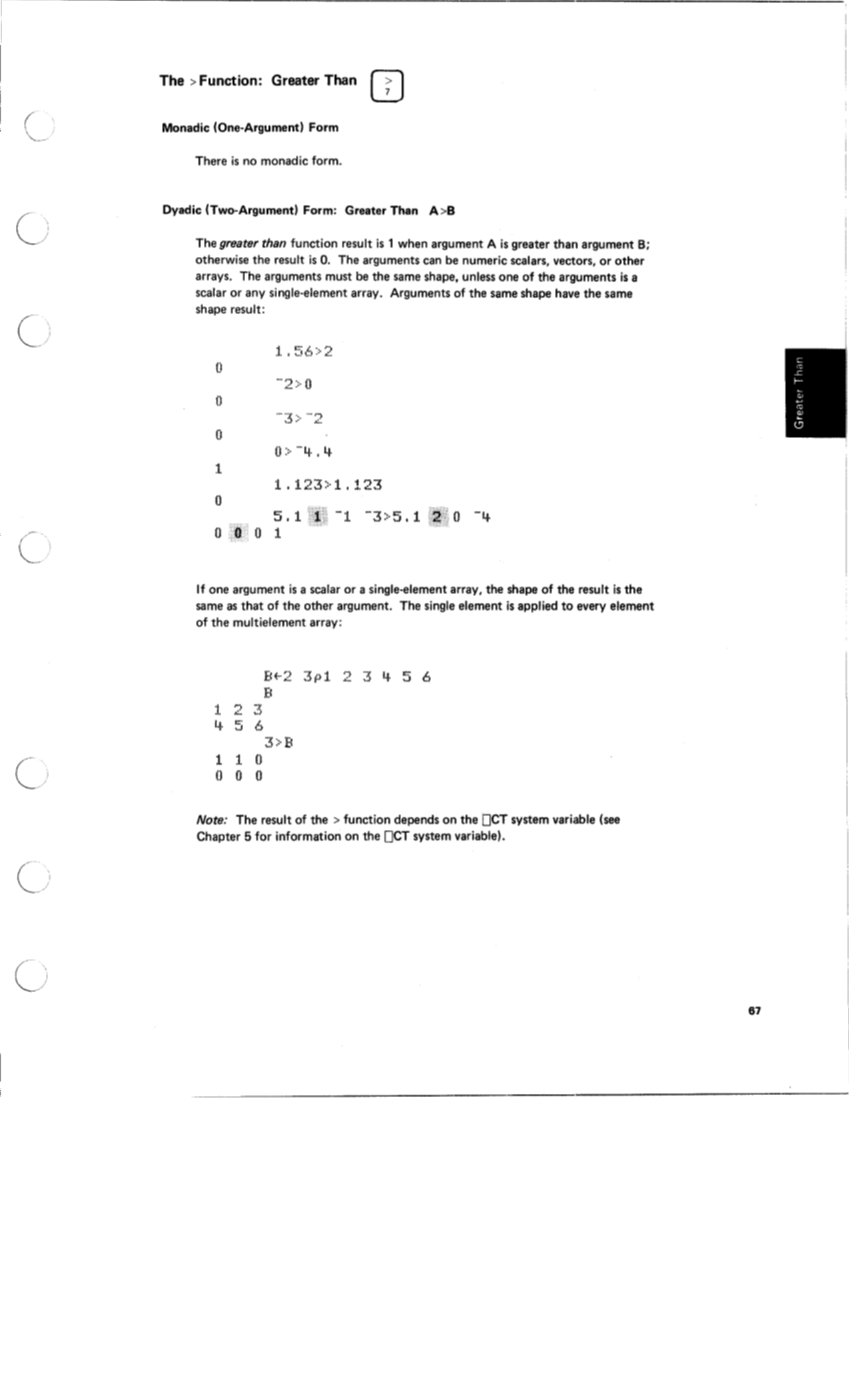The T Function: Nor
The Tsymbol is formed by overstriking the or (v) and the not (-) symbols.
Monadic (One-Argument) Form
There is no monadic form.
Dyadic (Two-Argument) Form: Nor AvB
The nor function result is 1 when A and B are both 0; otherwise, the result is 0. The
values of the arguments must be 1 or 0. The arguments can be scalars, vectors, or
other arrays. The arguments must be the same shape, unless one of the arguments
is a scalar or any single-element array. Arguments of the same shape have the same
shape result:
Nor Table
1GO
0 c 0
0 0 :I. I $0 1. 0 I.
0
i
1.000
- Argument A
If one argument is a scalar or a single-element array, the shape of the result is the
same as that of the other argument. The single element is applied to every element
of the multielement array:
The Tsymbol is formed by overstriking the or (v) and the not (-) symbols.
Monadic (One-Argument) Form
There is no monadic form.
Dyadic (Two-Argument) Form: Nor AvB
The nor function result is 1 when A and B are both 0; otherwise, the result is 0. The
values of the arguments must be 1 or 0. The arguments can be scalars, vectors, or
other arrays. The arguments must be the same shape, unless one of the arguments
is a scalar or any single-element array. Arguments of the same shape have the same
shape result:
Nor Table
1GO
0 c 0
0 0 :I. I $0 1. 0 I.
0
i
1.000
- Argument A
If one argument is a scalar or a single-element array, the shape of the result is the
same as that of the other argument. The single element is applied to every element
of the multielement array:









































































































































































































































